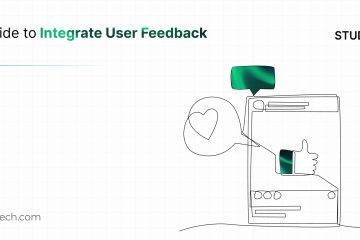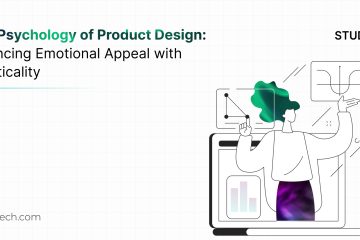Let’s say you’ve just launched a sleek, feature-packed fitness mobile app, confident it’s going to be a hit. But as the weeks go by, you notice something concerning — users aren’t sticking around. Despite the app’s cutting-edge tech, it’s missing the mark. Why? Because it doesn’t fully align with what users actually need. Now, let’s look at Dropbox in its early days. Before it became the cloud storage powerhouse we know, Dropbox’s founders leaned heavily on user feedback. After sharing a simple demo on Hacker News, they received a flood of feedback, which they used to tweak and improve the product. This iterative process based on real user insights helped them build a product that resonated with users and skyrocketed Dropbox to success.
This is why user feedback is beyond addressing user grievances, it extends to transforming user insights into strategic product improvements.
User feedback refers to the information and insights provided by users about their experience with a product, service, or system. It encompasses their opinions, suggestions, and reactions regarding how well the product or service meets their needs and expectations. This feedback is essential for understanding user satisfaction, identifying areas for improvement, making data-driven decisions to enhance the overall customer experience, and guiding future developments. In this article, I aim to outline a design-centric approach for integrating user feedback into a product.
Types of User Feedback:
User feedback can be classified based on its type, source, timing of collection, and nature. Detailed, descriptive feedback in the form of user comments, suggestions, or open-ended responses represents ‘Qualitative feedback’ or ‘Detailed feedback,’ while measurable data via star ratings or NPS scores indicates ‘Quantitative feedback.’ These are otherwise called ‘Brief feedback’ due to their short one-word nature. When a user offers feedback directly through formal channels like surveys, support tickets, or customer service interactions without being prompted, it is considered ‘Direct feedback’. A business can track its users ‘Indirect feedback’ by inferring their behavior, such as usage patterns, feature engagement, or metrics like drop-off rates and error logs.
‘Hotjar’, an enterprise-level behavior analytics platform, provides indirect feedback through heatmaps, recordings, live interviews, and surveys, showing where users spend time, the most clicked buttons, and ignored elements. The social media tool ‘Mention’ monitors platforms for brand mentions to gather indirect insights and feedback.
The ‘Proactive method’ of actively seeking out and encouraging input from users, rather than waiting for them to provide it spontaneously, helps in anticipating user needs before issues arise and leads to a more responsive and user-centric product or service. This type is typically structured and focused on specific aspects of the user experience. Eg: Online surveys, usability testing, and user interviews.
The counterpart, the ‘Reactive method,’ collects user feedback after an interaction, often in response to a prompt. This method helps address specific problems and gather insights from real-time user experiences and often appears in user reviews, social media posts, or informal communications. Eg: post-purchase surveys, product reviews, social media monitoring, and in-app feedback.
Compliments or positive responses highlighting satisfaction or enjoyment denote ‘Positive feedback,’ while criticisms or complaints indicating dissatisfaction or issues denote ‘Negative feedback.’ Feedback that is neither explicitly positive nor negative, often providing descriptive or factual details, is considered ‘Neutral feedback.’ This feedback, based on emotional tone, is often collected using sentiment analysis tools, which work on segments such as customer support tickets, emails, reviews, surveys, social media, etc. Examples include ‘Monkey Learn’ and ‘HubSpot Service Hub’.
Based on the customer segment, feedback can be further divided into ‘New customer feedback,’ ‘Loyal customer feedback’ (i.e., long-term or repeat customers), and ‘Churned customer feedback’ (i.e., those who have stopped using the product or service).
‘Pendo,’ a customer feedback tool suitable for large enterprises, offers sentiment analysis features to analyze how customers feel about their products/services and offers customer segmentation to segregate feedback data, and helps to upgrade the brand roadmap. ‘ChurnZero’, a customer success platform for mid-sized enterprises, aims to reduce churn by creating an effective feedback loop through intuitive workflows and by acting on customer feedback and engagement data.
Best practices for designers to integrate User Feedback:
Feedback that comes from various channels needs to be reviewed, categorized and prioritized. Collecting feedback early in product development, especially during prototyping and wireframing, helps identify user pain points before the product is built. Testing the prototype with a diverse segment of the target audience, including stakeholders, provides actionable insights to address issues.
Feedback collected at various stages, both before and after launch, can be mapped to relevant user personas to better tailor solutions for specific user segments. Focus on analyzing the underlying issues behind each feedback and create effective solutions. Ensure user feedback aligns with the product’s overall user experience goals.
Additionally, supplement qualitative feedback with quantitative data, like analytics and heatmaps, to validate user input and make data-driven decisions. Tools like A/B testing can help assess which feedback-driven changes improve the user experience.
Tools for categorizing User Feedback:
- Feedback Management Systems: enable businesses to categorize and process feedback efficiently by automating the collection, analysis, and prioritization of user insights.
Eg: ‘Zendesk’ provides robust feedback categorization, ticket management, sentiment analysis and custom tags to help their teams prioritize the feedback. ‘Freshdesk’ categorizes user feedback using a combination of ticketing, tagging, and custom fields, and is processed with the help of automated workflows, sentiment analysis, and prioritization. Both the tools primarily manage customer queries through automated ticket systems.
- Community Feedback tools: Platforms designed to facilitate collection and management of feedback from a community of users, customers, or stakeholders. These tools harness the collective insights and opinions of a group to help organizations understand user needs, preferences, and experiences.
Eg: Help shift, Slack communities.
- Online customer review tools: Platforms designed to facilitate the collection, management, and analysis of customer reviews for businesses and products. ‘Trustpilot’ platform collects and manages customer reviews with tools for review collection, reputation management, and performance analytics.
Some best practices for teams include:
- Maintain an internal feedback repository to track user feedback, actions taken, and results, ensuring no insights are lost and helping prioritize future changes.
- Involve a cross-functional team, including customer support, product managers, and developers, to ensure feedback is clearly understood and properly implemented.
- Hold feedback workshops to brainstorm solutions with stakeholders.
- Communicate changes to users through release notes or email updates to show that their feedback is valued, and the product has improved based on their input.
Like design, feedback should be treated as an iterative process. Continuously refining the design, incorporating feedback, and adjusting based on results helps meet evolving user needs. Embracing these practices through accessible feedback mechanisms encourages continuous improvement and helps designers stay aligned with users’ goals.
User feedback is a critical part of product success considering how it brings clarity to the user’s needs and shines a light on blind spots that even the best product teams might miss. It keeps companies grounded in real user experiences, ensuring that products stay relevant and useful in a rapidly evolving market. The true strength of any product lies in its ability to evolve, and that evolution is driven by the voices of its users. Incorporating their feedback ensures that your product remains competitive, adaptable, and truly user centric.
Stay tuned for part two of this series, where we’ll get beyond the surface to understand how to effectively implement feedback with efficient tools for continuous product improvement.


